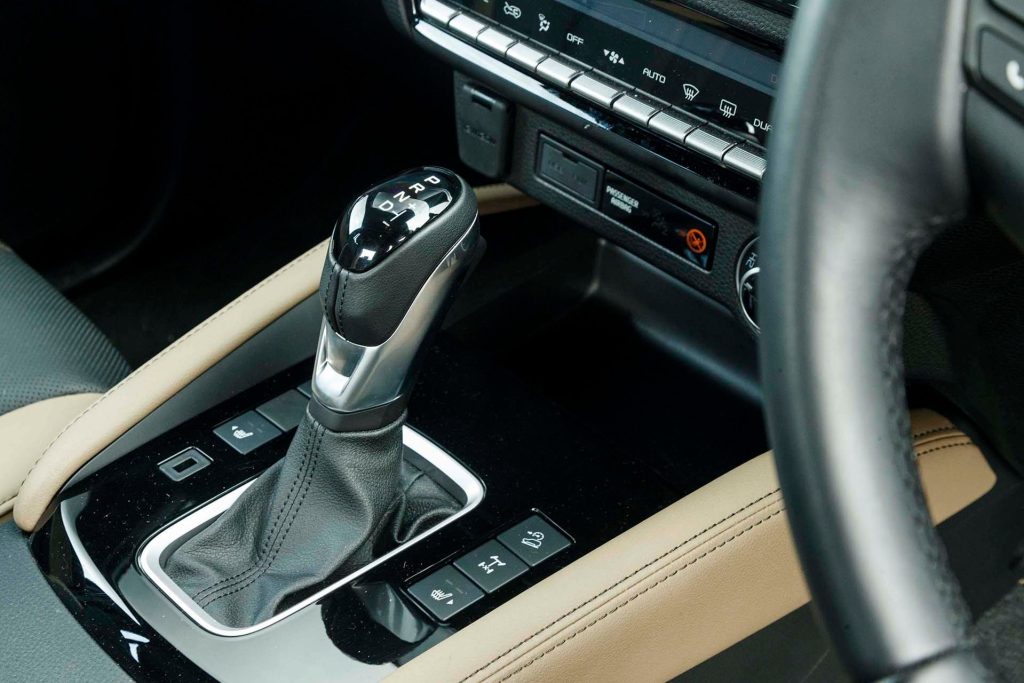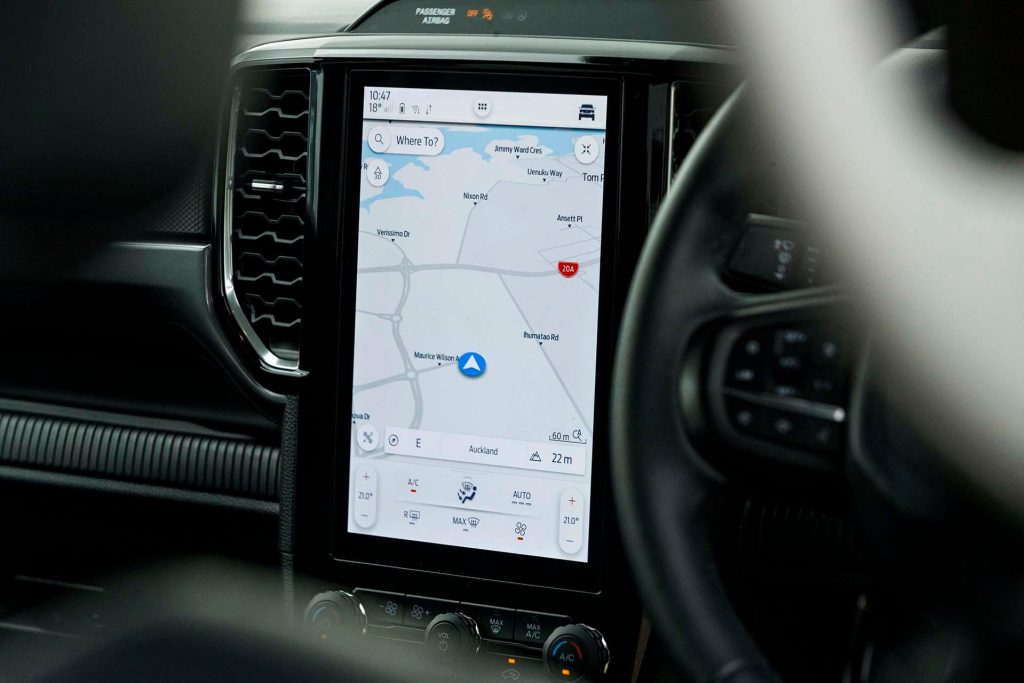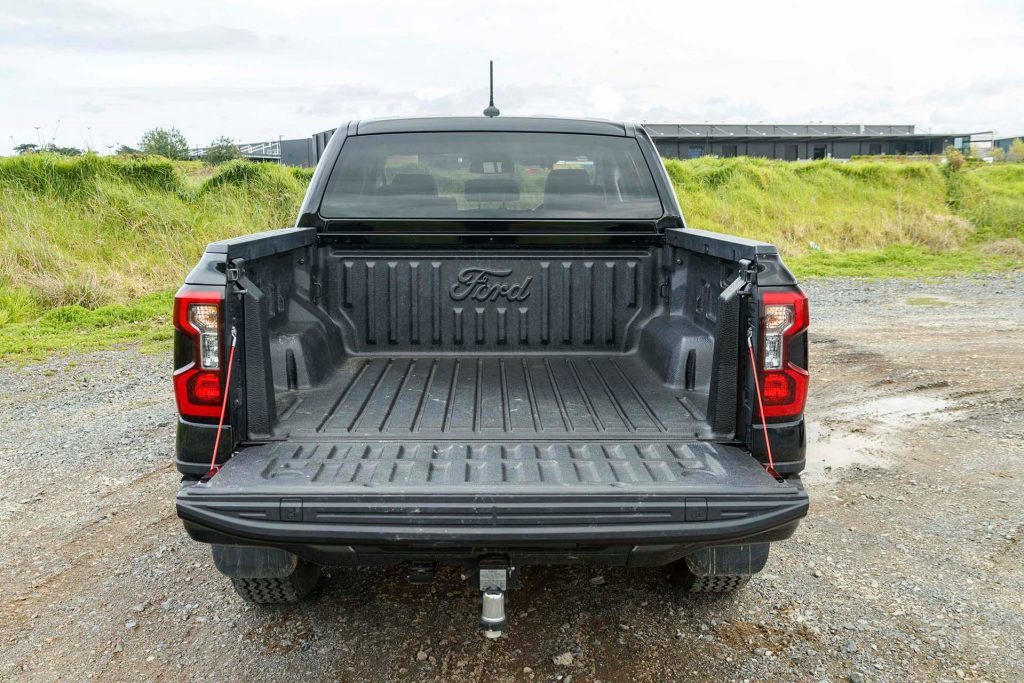2022 Ford Ranger Sport vs 2022 Mazda BT-50 Takami comparison review
Words: Peter Louisson | Photos: Tom Gasnier
With Ranger recently renewed and a new BT-50 range-topping Takami just out, it seemed a good time to drive them both on road, comparing and contrasting.
A highlight of any year is the replacement of the best selling vehicle with a new model. And in the case of the perennially popular Ford Ranger it’s a properly serious update, with chassis, body, and tech renewals. On top of which there’s a new powertrain in the form of a 3.0-litre V6 turbodiesel engine in the Sport model you see here. Its 184kW arrives at 3250rpm and 600Nm of torque is on from 1750rpm, grounded by on-demand 4WD. The gearbox is a 10-speed automatic transmission, so a manual transmission isn’t even offered.

Also new in this sector is the Takami version of Mazda’s BT-50 ute. The BT-50 has been in the market now for 18 months, and where once it was based on the Ranger, it now uses shared Isuzu D-Max mechanicals. It has a Mazda-modified grille and fascia.
Takami is cosmetically rather different and it now heads the BT-50 range, as the model name does in other Mazda line-ups. While specification mirrors that of the Limited variant, Takami receives various cosmetic enhancements aimed at a sportier look. Mechanicals are the same as for the Limited but this special BT-50 comes with gray roof rails, side steps and a wing, and gloss black grille, door handles, mirror caps, sports bar and fender flares, while the interior gets two-tone black and beige leather/suede seats, dash and door coverings, making for a surprisingly interesting cabin ambience. There’s also a retractable and lockable roller lid for the wellside.

These then are the two most recently released completely updated utes available here, both double cab automatic offerings with 3.0-litre engines, 4×4 drivelines, one tonne payloads and 3.5 tonne braked towing capacities.
Similarly specified
They’re both reasonably replete with specification, especially in the safety domain, featuring adaptive cruise, autonomous emergency braking, forward collision warning, lane departure warning and lane keeping, RCTA, parking sensors both ends and blind spot monitoring. Plus a multitude of airbags in both, nine for Ranger, eight for BT-50. They’re car like in this regard, which is why BT-50 and new Ranger both have ANCAP five-star crash ratings.


Takami specification includes a power adjustable and heated driver’s seat, an eight-speaker audio, and lane keeping that has been recalibrated by Mazda engineers to be less intrusive. And so it is, in the main, which is handy because they really don’t make it that easy to switch off. The Mazda alone gets seat heaters while only the Ford gets a wireless phone charger. Takami has a conventional shifter, while the Ranger’s stubby lever makes initial selection of reverse gear tricky, until you get used to it.


Pricing for the top BT-50 model is $68,290 including ORCs but not the government’s $2990 clean car fee. That therefore makes it around $6500 more than the Limited model and a similar amount less than what the equivalent D-Max costs. It’s closest in price to the $66,990 Ranger XLT double cab with its 154kW/500Nm 2.0L biturbo four and 10-speed auto.


As to the Ranger Sport, which is distinguished by a blackened grille, 18-inch rims and ebony interior, that has a $75,490 ask, plus $3910 clean car fee, putting it not far from $80K versus just over $70k for the Mazda. Both come with five-year/150,000km warranties, the BT-50 with capped $250 servicing costs. Is the Ford worth the extra?


Ranger bigger all round
Ranger has undergone a 50mm stretch in both wheelbase and track, which Ford says improves ride comfort and vehicle stability. Suspension updates contribute to improved ride performance. Specifically, the rear dampers were moved outboard of the springs for a better controlled ride, laden or otherwise. The extra track width means the tray is also wider and can now take a European pallet which measures 120x80cm. BT-50 cannot but its payload of 1065kg exceeds that of Ranger (980kg).

Helping with loading the Ford are side steps at the rear corners and a spring-loaded tailgate, assisting mainly with raising the unit, not present on BT-50. Look closely and there’s also a handy one-metre ruler on the tailgate and cupholders for tradies. Only Takami gets a wellside lid while Ranger comes fitted with a towbar and tray liner.


Inside the Ranger is modernised, with a bright portrait-style screen that’s whip fast in action; we’ve never come across a unit that mates with our Android smartphone so quickly. Digital instruments include a minuscule tacho (not really even necessary on something that tops out at 4000rpm) and all the info you’d rightly need either there or one submenu away.
V6 or IL4?
That largely depends on whether or not you think the V6 warrants the extra. Ford will tell you that customers wanted it for towing (hmmm, the 2.0L biturbo is also rated to haul 3500kg braked loads) but we suspect it is more because rivals like VW have been making hay with its V6 powerplant.


The two engines here are similar in displacement and their use of diesel and rev limitation. Otherwise, chalk and cheese. The BT-50 mill is not the strongest of the IL4s about, finishing 44kW and 150Nm shy of the Ranger Sport’s tally, with four fewer gears and all. Performance figures for the BT-50 are about line-ball for the four-cylinder turbodiesel ute set but are 1.5sec shy of the Ranger V6’s.


So the Sport is certainly quicker but it just feels more effortless in everyday use, and for refinement it is hands-down better. Syrupy smooth, it’s nigh on inaudible at times. Climb back into the Mazda and there’s the usual four-cylinder turbodiesel clatter, especially from cold. It’s never as silky as the V6, nor as relaxed. The difference in cog count is not that big of a deal given both of these you drive on torque. But the 10-speeder is less gappy and smoother. It’s almost CVT-like in action, sticking to a narrow range of revs on a constant throttle and shifting through the gears quietly. Ranger has a manual mode that hastened performance figures slightly, along with a tow mode.


Mean fuel use for Ranger we rate around 10L/100km overall (officially the WLTP figure is 9.6L/100km/254g/km), getting into the low sevens on adaptive cruise control set at 100 (which is actually 96km/h). That compares with 9.2L/100km (238g/km) for the BT-50; we recorded around 9.5L/100km overall, with a low sevens best.
Dynamics one-way traffic
The Mazda proved the better stopper, despite not having rear discs. That’s thanks largely to its more tarmac-oriented footwear, not that its 38m distance is exactly record setting. The Ford couldn’t break 40m on account of its dual-purpose rubber.

Despite that compromise, the Ford is the better cornering and riding device than the Takami. And it’s the unladen ride that’s particularly telling, relatively smooth over even the most uneven surfaces on our regular drive loop whereas the Takami is not as settled or easy going, about average for ride quality in the double cab ute sector.

And on top of that the Ford sets the pace for handling as well, even on tyres that look like they’d be happier mud plugging or sand churning than bend swinging. Whether or not the handling advantage is because of the new frontal ring structure under the hood of the Ranger is unclear but on the photo shoot this would scoot through our chosen corner 10km/h quicker than the Mazda. Admittedly this was due in part to the Takami triggering ESP intervention earlier.

Ranger’s ‘4A’ set-and-forget on-demand AWD mode is brilliant, ideal in slippery on-road conditions. Takami is 2WD only on tarmac. The Ford’s steering is sharper and more communicative than the lower geared Mazda’s too. Like Ranger, Mazda has 2H, 4H and 4L settings, but the Ford also adds six different drive modes (Normal, Eco, Tow, Slippery, Mud and Sand). No Sport, ironically.
On the catwalk
New Ranger has it over BT-50 visually but then it has it over all the competition. The C-clamp headlights are visually distinctive, and ‘Ranger’ is now a bit more subtle at the rear, stamped into the tailgate. Sculpted flanks complete the look. Takami is the most attractive of its range, with its grey and black exterior highlights, while inside it’s nifty too, with fewer hard plastics than the Ranger. However, its touchscreen cannot hold a candle to the Ford’s sharp system.


Ranger Sport features hidden cubby holes under the rear seats, and better minor controls for things like HVAC and volume. Its door releases, incorporated in the door pull, are simply wizard thinking, as are the side steps at the rear to facilitate access to the tray. Both vehicles feature road sign recognition, handy given the lower out of town speed limits being implemented.

Overall, the newer Ranger gets the nod here and it may well have done against any of the current one-tonne utes. Certainly it is worth the extra here, for its better mix of ride and handling, its well considered controls and its workman-like looks. Many will probably view the V6 as worth spending the extra on, for its combination of ease and civility. We reckon it’s the best ute you can buy in its class at present.
| Model | Ford Ranger Sport |
| Price | $75,490 |
| Clean Car Discount | Fee + $3910 |
| Engine | 2993cc, V6, TDI |
| Power/Torque | 184kW/600Nm |
| Drivetrain | 10-speed auto, on-demand AWD |
| Fuel Use | 9.6L/100km |
| C02 Output | 254g/km |
| 0-100km/h | 7.72sec |
| 80-120km/h | 5.67sec (163m) |
| 100-0km/h | 41.23m |
| Stability systems | ABS, ESP |
| Safety | AEB, ACC, BSM, LDW, RCTA, ALK, AHB |
| Payload | 980kg |
| Tow rating | 750kg (3500kg braked) |
| Service intervals | Variable |
| Warranty | 5 years/150,000km |
| ANCAP rating | 5 stars |
| Weight | 2346kg (claimed) |
| Model | Mazda BT-50 Takami |
| Price | $68,290 |
| Clean Car Discount | Fee + $2990 |
| Engine | 2999cc, IL4, TDI |
| Power/Torque | 140kW/450Nm |
| Drivetrain | 6-speed auto, on-demand AWD |
| Fuel Use | 9.2L/100km |
| C02 Output | 238g/km |
| 0-100km/h | 9.48sec |
| 80-120km/h | 7.21sec (209m) |
| 100-0km/h | 38.56m |
| Stability systems | ABS, ESP |
| Safety | AEB, ACC, BSM, LDW, RCTA, ALK, AHB |
| Payload | 1065kg |
| Tow rating | 750kg (3500kg braked) |
| Service intervals | 12 months/15,000km |
| Warranty | 5 years/150,000km |
| ANCAP rating | 5 stars |
| Weight | 2065kg (claimed) |





